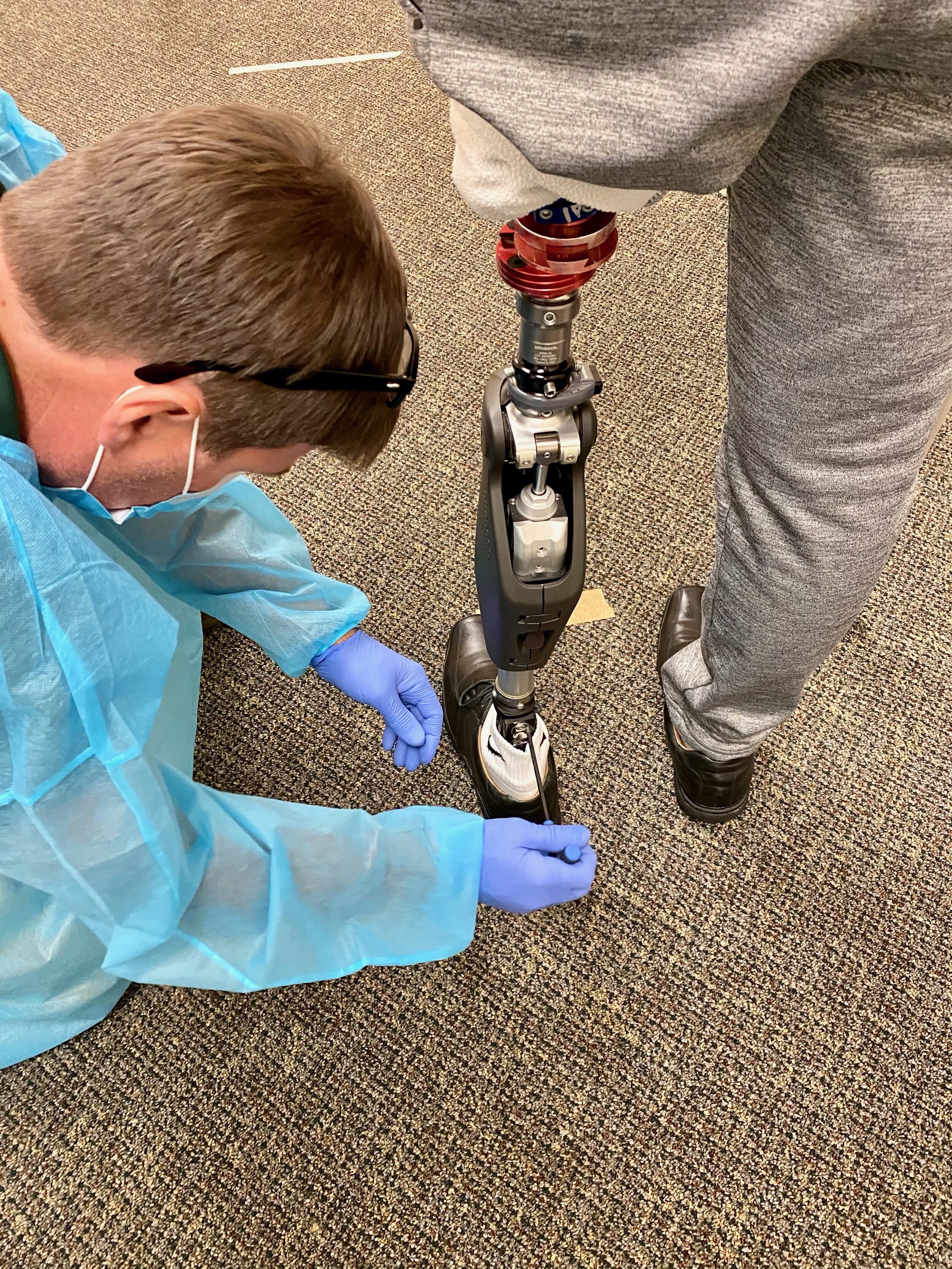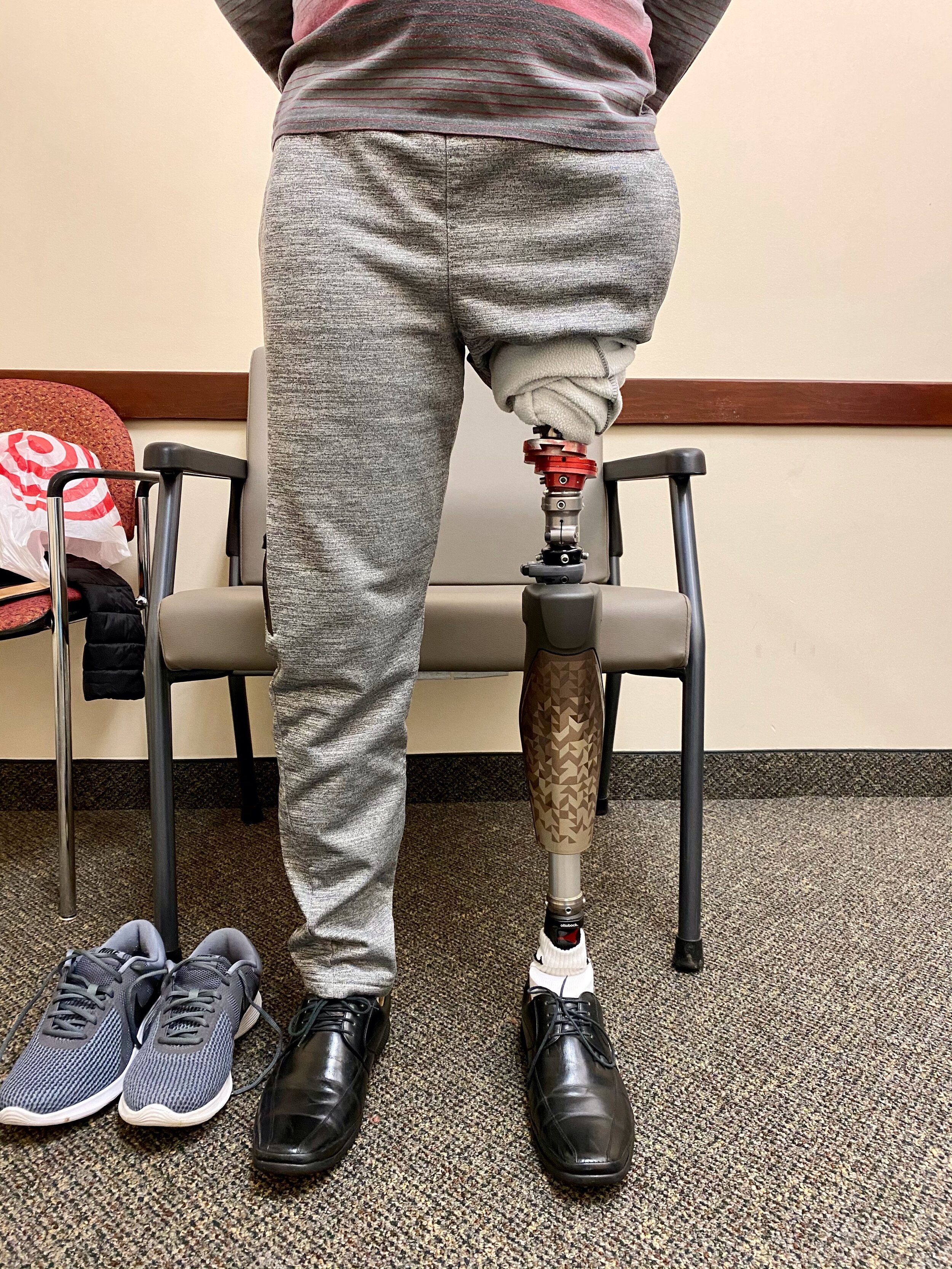Some people know Kleyton as Pastor Feitosa. That is because he is currently serving as pastor at the Living Word Seventh-Day Adventist Church in Glen Burnie. (All are welcome to visit!) The path to his congregation in Glen Burnie is a long one that covers at least three continents and four languages. The website for the church summarizes this pretty well:
“A native of Brazil, Kleyton grew up experiencing and enjoying the cultural diversity of his vast country. He enjoys ministering to people of different culture and ethnic background. His passion for cross-cultural ministry has taken him and his family to minister in four different countries – Brazil, The United States, Egypt and Sudan. Kleyton is fluent in Portuguese, English, Spanish, and knows some Arabic as well.
During his years of work he has served as a teacher, a school chaplain, a youth, associate, and senior pastor. He has also ministered in leadership positions as Conference Executive Secretary and Mission President. Kleyton earned a Bachelor’s degree in Theology from the Latin American Theological Seminary in São Paulo, Brazil, a Master of Arts degree in Missions and a Doctorate in Evangelism and Church Growth, both from Andrews University.
Born and raised in a minister’s home, early in his life he felt called to serve the Lord as a pastor. He is passionate about serving God and serving people and is looking forward to the second coming of Jesus. He is also passionate about his family and enjoys spending time with his two sons, Derek (16) and Malton (14). Kleyton is happily married to his High School sweetheart Delma, an educator and counselor.”
What this summary doesn’t tell us is his journey through cancer and the amputation it led to, and his subsequent choice of a relatively new procedure known as osseointegration to get his prosthesis.
Kleyton was serving on a mission in Cairo, Egypt when he had to return to the US for his health. He had a reoccurrence of cancer in his left leg. After multiple recurrences and several surgeries, surgeons at Johns Hopkins were at the point where they could no longer spare his limb. The resulting residual limb was very short – ending so far above the knee that making a prosthesis was going to be a very difficult effort. Where most patients with amputation would have received a temporary prosthesis in three months after surgery, he could not. He was better off with crutches than the difficult prospect of trying to fit a prosthesis. This was not a satisfactory solution for Kleyton. When his physician mentioned the possibility of osseointegration (OI), he consulted with Dr. Jonathan Forsberg at Johns Hopkins Osseointegration Clinic.
Pastor Feitosa visited an osseointegration clinic at Sibley Memorial in DC., a Johns Hopkins institution, to begin the process. He went about learning just what osseointegration is. For an excellent video about the technique and its benefits, watch this short video from CBS Sunday Morning. It is an innovative procedure to attach an implant directly into the bone of the residual limb, in order to allow a prosthesis to be attached without the traditional socket. There are many benefits to this option – solving issues such as excessive sweating, pain, pressure, chafing and skin sores. Not everyone is a candidate for this, but Kleyton was and chose to proceed with the method. Paramount to him was regaining the kind of mobility that crutches did not allow.
There are many different types of implants and there was a decision to make as to what type should be used. Kleyton chose one that Dr. Forsberg developed, which at the time required quite a bit of paperwork and an approval process. What would normally have taken three months to get your first temporary traditional prosthesis turned into a frustrating two year effort. Kleyton trusted and prayed for the right outcome, and he eventually received a different implant.
There are those who might shy away from this process, that is, having something attached directly into your bone. Kleyton says he felt like he was fighting for his life, and in this context, he had no qualms about getting it done and allowing him to walk again. He was super excited! He watched YouTube videos and educated himself about this rare procedure. Everything he saw and heard told him that osseointegration was an amazing improvement over the traditional socket and was the way for him to go.


The process involved two separate surgeries for this particular style of implant: one to put in the implant and close it, then wait for healing. Then, because of COVID restrictions he had a delay of six months to have the second component put in – this is the part that shows on the outside where the prosthesis clicks in. He was still on crutches waiting for this to happen – couldn’t carry anything, or move things around. He had to be creative to carry things, often wearing a backpack just to carry his computer. He wanted to get off those crutches and free his upper limbs!
Right after that second surgery you start bearing weight, and in six weeks he was ready for the prosthesis. The feeling after standing on two feet again was amazing. It was a process – learning how to walk again. Those with osseointegration have to take care of the implant site to avoid infection, but gaining mobility was a worthwhile tradeoff for that vigilance. He also has to be concerned about impact sports because of the implant into the bone. His surgeon doesn’t want him to run or jog, so soccer is out of the question! He can go to the gym and work out.
He is happy to be able to walk again – visit his congregants and stand at services. Interestingly enough, those with osseointegration have what is known as osseoperception, or the ability to sense the world through the limb, and osseoproprioception, or the ability to sense where the prosthesis is without looking at it. Kleyton says when he walks on the grass, he can “feel” the grass. He can “feel” the ground through the prosthesis.
He communicates often with the worldwide community of others with osseointegration via Facebook and Instagram. These forums are available for everyone to share information with other osseointegration users and those interested in the process. One day, when COVID doesn’t control so many of our international travel options, he hopes to visit those people and places. In the meantime, he would like for others to know that while OI is new, it will change your life for the better forever. He doesn’t regret having done it, and has never heard regrets from anyone else who has done so. It has improved his life 100%.
“If you are thinking about being an amputee, remember it is not the end of the road, it’s just a detour. Don’t get discouraged. We are all on a road trip in our lives, and we all go through detours that are there to teach us life lessons. We need to have courage and faith and determination. We take the detours, face these challenges, and we just have to come back to the road to continue the journey. My faith has helped me greatly.”
If you want to “meet” and hear his testimony about his cancer and faith, you can watch this video of Pastor Feitosa on YouTube by clicking here.



